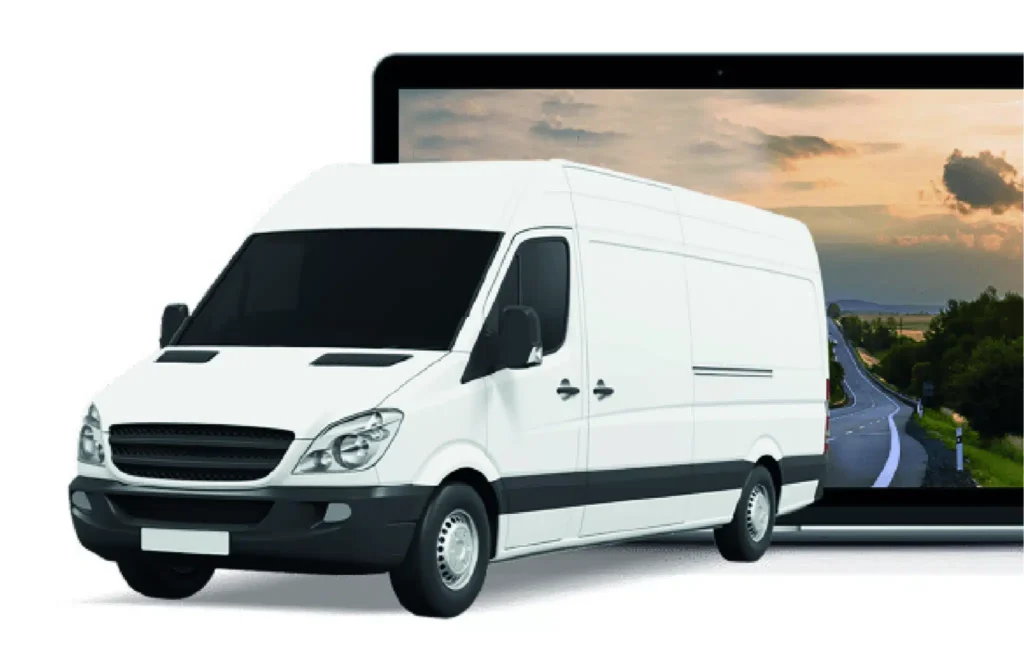

Business owners with small fleets using staff drivers wear many hats and face unique challenges. Adding a fleet management platform frees busy business owners to focus on daily operations while improving fleet efficiency.
Operating a small business that performs services at a home or jobsite comes with challenges. Company owners and operators have a business to run, customers to service, employees to supervise, and a fleet of vehicles to manage.
They juggle countless tasks and manage many moving parts, including monitoring and scheduling vehicle maintenance, improving driving behaviors and safety, and keeping accurate records.
Whether you operate a landscaping operation with one truck or an HVAC company with 20 service vans, your fleet can benefit from fleet management tools. The right platform helps businesses leverage their data to make informed decisions about drivers and vehicles that directly affect their success and bottom lines
Before adding a fleet management platform to your operation, it’s important to define fleet management.
Fleet management refers to actions that help a fleet operate efficiently, on time, and within budget. These actions can include tracking fleet activities, driver dispatch and routing, route management, vehicle record keeping, monitoring driver behaviors, and service and repairs. The actions converge to help companies ensure compliance, improve efficiency, and reduce costs.

Even fleets driving passengers to the airport, operating food trucks selling food downtown, or dispatching technicians to repair household plumbing can benefit from fleet management tools. There are numerous advantages to improving fleet management through improved data management and GPS tracking.
There’s a misconception, though, that fleet management platforms only work for large fleets. While many companies design tools for maximum-sized fleets, platforms, such as Satrack’s fleet management platform, pair well with field service fleets too. These tools deliver a host of benefits for service fleets of one or more vehicles. The advantages include:
Access to Real-Time Information:
Fleet management keeps you informed. Without a platform to manage your fleet, you may not know where drivers are or how they are doing unless you contact them directly.
Fleet management platforms let you see driver and vehicle location in real time. They also provide data on speed, routes, time spent at each location, and fuel usage. These tools pinpoint driver locations when service requests come in so you can dispatch the closest driver to the customer’s location. The success of your business is tied to on-time arrivals and exemplary service. You can’t have one without the other. Fleet management software lets small businesses track on-time arrivals along scheduled routes or stops. Business managers know when vehicles arrive late, linger too long, or show up at unapproved locations.
Improved Safety:
Fleet management also improves safety, a top concern when employees, rather than professional drivers, use company cars to drive to customers’ homes or job
sites. When you monitor driver behavior, you can use data on excessive speeds or hard braking to correct and improve employee actions on the road. Improving safety can reduce accidents and save lives. U.S Bureau of Labor Statistics’ (BLS’) data cites motor vehicle crashes as the leading cause of work-related deaths in the United States. Driver/sales workers and truck drivers incurred 1,005 fatal occupational injuries in 2019, the highest since BLS began tracking these stats in 2003. And work-related crashes represent 18.8% of work-related deaths.
Now consider that the National Highway Traffic Safety Administration (NHTSA) reports that 94-96% of all motor vehicle crashes involve human error. And, that as early as 2015, research revealed when fleets combine data on how drivers behave on the road with training designed to correct unsafe behaviors, they can reduce accidents by up to 50%.
Financial Protection:
Improving driver behavior also protects the bottom line. Crashes cost employers millions a year. The Network of Employers for Traffic Safety finds on-the-job highway crashes cost employers:
Operational Insight:
Fleet management gives insight into operations and activities. You can see how your fleet performs and identify possible improvements, then incorporate these recommendations into your operations.
Fleet management platforms can monitor vehicle speed, idle times, and routes to see where drivers waste fuel. Fuel use represents 60% of a fleet’s total operating costs, thus fuel waste puts a huge dent in fleet budgets. When companies combine knowledge of where they waste fuel with a driver training program
and policies designed to reduce fuel waste, they can slash fuel costs.
Argonne National Laboratory research finds a compact sedan uses 0.16 gallons of non-diesel fuel per hour of idling with no load. AAA now puts the average fuel price at $3.19 per gallon. If a five-vehicle fleet idles five hours a day every day of the year, that adds up to $1,164 at today’s fuel costs. Now imagine if you have 20, 50 or even 100 vehicles. The cost of idling packs a hefty price tag when drivers spend a lot of time behind the wheel.
Better Maintenance:
Fleet management improves fleet maintenance. Vehicle maintenance is a significant factor in total cost of ownership (TCO). While you may not be able to
control maintenance costs, you can regulate maintenance quality and consistency.
A fleet management platform can ensure fleet vehicles receive regular and effective maintenance. Knowing what maintenance vehicles need and being able to predict when they need it, lets you schedule maintenance around business operations. It also keeps every vehicle in your fleet in peak condition to reduce unplanned downtime. Further, data collected on vehicle maintenance trends casts a spotlight on premature wear and tear and helps plan your next vehicle purchase.
Enhanced Record Keeping:
Managing a fleet demands detailed record keeping. When fleet management is not your sole job, these records can fall through the cracks. Using a fleet management platform keeps all records in one place and issues reminders as updates are needed. A fleet management platform provides a central location to house copies of driver’s licenses and vehicle registration information. Organizing records systematically helps operations comply with state and federal laws.
Satrack Fleet Management Tracking Technology simplifies organizing and optimizing fleet operations. Our tools help business fleets view and control many
moving pieces. Fleet managers can access the location of company vehicles and drivers, know who is driving, see how the vehicle is being driven, and receive vehicle diagnostic data in real time.
Optimizing fleet operations involves making sense of your data. Satrack partners with service fleets to optimize operations. The company develops day-to-day reporting structures and custom features to provide tools that smaller service fleets will use. For instance, if you pay drivers by miles or by hours of operation, the system will track this data to aid payroll services.
Managers can access over 50 reports already in the system or develop customized reports about fleet operations. Business owners can view reports in a web portal or download them as a PDF or Excel document. They also can use the system’s scheduling tool to send reports automatically to their inbox on a desired frequency.
They also can set the Satrack system to trigger alerts when data meets specific parameters. For instance, they might receive an alert when a delivery takes too long, or a vehicle idles longer than it should. All alerts go to the system’s main screen. There’s no scrolling through screen after screen to locate the information you need. Satrack tools allow managers to track and identify driving habits among employees operating company vehicles. Managers can observe when drivers are (or are not) working and view unauthorized stops or route changes. They can identify trends in driving habits such as speeding, harsh accelerations, or lengthy idle times to reduce fuel use, boost performance, and improve safety.
Satrack’s driver ID solution allows you to monitor the driver’s journey data when they switch between various vehicles. It encourages drivers to be more responsible and accountable for their driving behavior, resulting in safer and more cost-effective driving. Further, Satrack provides vehicle diagnostic data in real time to help fleet managers get a handle on vehicle health and proactively schedule service. Whether your business installs Internet services, repairs household appliances, or landscapes around new buildings, you can benefit from fleet management tracking and technology. This technology can optimize fleet operations to meet customer needs, keep employees safe, protect company assets from damage, and save money.

Learn more about how Satrack can help smaller field service fleets optimize operations, improve driver behaviors and lower risk, deliver services on time, and reduce operating costs. Click here to schedule a call!
